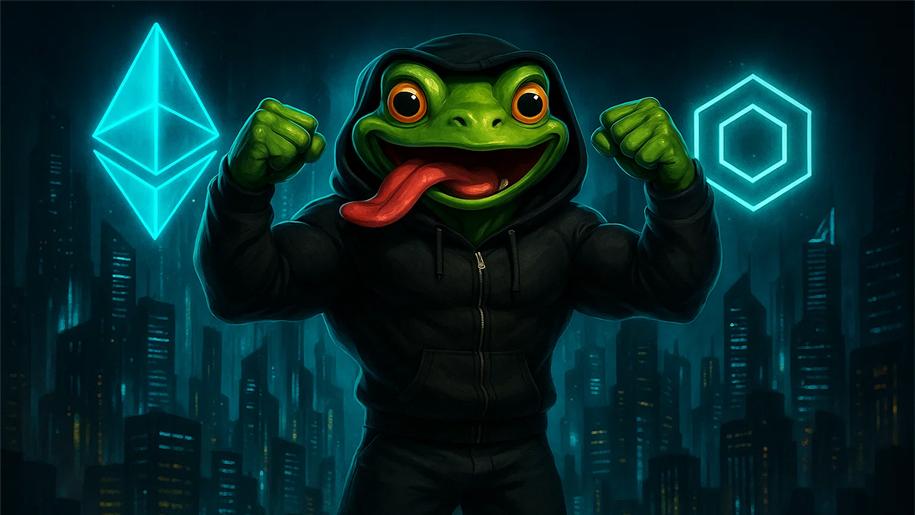On September 30, 2025 Deutsche Börse and Circle signed a memorandum of understanding to explore the use of USDC and EURC in trading, custody, and settlement flows.
This is an operational initiative aimed at integrating stablecoins compliant with the MiCA (MiCAR) regulatory requirements into European financial infrastructures, with a clearly defined institutional scope.
The official communication can be found in the parties’ note, and the journalistic reconstruction has been covered by specialized outlets such as CoinDesk.
In summary: the integration will involve the group’s platforms (360T and 3DX), regulated custody and settlement services via Clearstream, and the operational support of Crypto Finance. In this context, the parties have described the initiative as “first‑of‑its‑kind” in Europe, emphasizing the practical orientation of the tests.
Potential impact: the project could lead to faster settlement, reduced costs, and lower counterparty risk for banks and asset managers, although timelines, technical scope, and authorization conditions still need to be defined. That said, the results will depend on the outcome of the pilots and implementation aspects.
According to data collected from the parties and reported by the specialized press, the market capitalization of USDC was in the order of magnitude of several tens of billions of dollars at the end of September 2025 (order of magnitude: approximately 74 billion dollars).
Industry analysts note that institutional pilots tend to reduce settlement latency but require resilience metrics, operational limits, and interoperability tests to avoid risk concentrations.
Based on experiences reported in similar projects, measuring average settlement times, unit costs, and frequency of operational errors during pilot phases will be crucial to assess the actual operational benefit.
What was agreed
Deutsche Börse Group and Circle have signed a MoU to test the use of USDC and EURC within the group’s ecosystem.
The agreement aims to evaluate the use of stablecoins in the payment and settlement phases related to the trading of digital instruments, with possible extensions to post-trade use cases, should the tests support it.
The parties present the agreement as a piece of the European strategy on tokenization, in line with the MiCA regulatory framework (often also referred to as MiCAR). Indeed, the goal is to promote interoperability between traditional and digital environments without altering control safeguards.
Where it will be integrated: trading, custody, settlement
Listing and trading
The initial plan involves the participation of 360T and the digital exchange 3DX for the potential listing and trading of products linked to the use of stablecoins in market operations, with the aim of enabling tokenized payments to support exchange flows. It should be noted that this is an exploratory roadmap, focused on progressive phases.
Custody and Settlement
Clearstream will provide custody and settlement services in a regulated environment, while Crypto Finance will support the operational and connectivity component.
The combination of institutional custody and compliance controls aims to reduce counterparty risk and speed up settlement processes, maintaining security and traceability standards.
Why it matters: benefits and conditions
- Faster settlement: a transition from T+1/T+2 cycles to near real-time settlements is hypothesized for specific use cases, with reduced intraday exposure.
- Operational efficiency: the initiative aims to streamline payment flows and reconciliation, reducing friction between different platforms.
- Lower costs: thanks to automated and tokenized processes, a reduction in fees and liquidity management charges is expected.
These advantages remain potential until test results, metrics, and implementation methods are shared.
No operational date has been announced yet, and implementation will depend on technical choices, pilot outcomes, and applicable authorizations, which are essential steps.
Implications for European Markets
The initiative could accelerate the integration of MiCA-compliant stablecoins into market infrastructures, contributing to a more efficient circulation of liquidity between traditional and digital environments.
For intermediaries, it means testing tokenized payments within an institutionally regulated context, with a more defined and verifiable control perimeter.
Questions remain about the management of systemic risk and the impact on bank deposits if adoption were to expand on a large scale.
Yet, operators consider a prudent implementation crucial, with limits, monitoring, and high-quality reserves, in order to preserve stability and reliability.
The MiCA Framework (MiCAR): Rules and Supervision
The European MiCA framework is currently in effect for electronic money tokens (EMT) and asset-referenced tokens (ART), under the supervision of the competent national authorities and with the coordination of the EBA (EBA).
MiCA came into effect in June 2023 (Regulation (EU) 2023/1114, adopted on May 31, 2023). The use of stablecoins as a means of payment in the EU requires specific authorizations and safeguards related to reserves, in addition to disclosure and risk management requirements.
Reference documents:Regulation (EU) 2023/1114 (MiCA/MiCAR),EBA — institutional page.
Voices from the protagonists and reactions
Jeremy Allaire, co-founder and CEO of Circle, stated that the initiative aims to “reduce settlement risk, lower costs, and improve efficiency for banks, asset managers, and the entire market,” emphasizing how the European regulatory framework promotes orderly adoption.
Some observers highlight opportunities in cash management and collateral management, while urging careful monitoring of potential risk concentrations, operational resilience, and interoperability between networks and legacy systems. In other words, there is a focus on tangible benefits with a rigorous control of risks.
Who does what
- Deutsche Börse Group — market infrastructure provider, which includes platforms like 360T and 3DX and operates Clearstream and Crypto Finance.
- Circle — issuer of the stablecoins USDC and EURC, focused on use cases of tokenized payments and settlements.
- Clearstream — provider of regulated post-trade services (custody and settlement).
- Crypto Finance — responsible for operational components and connectivity for digital assets.
What’s Missing from the Announcement
- Performance metrics: no official quantifications have been provided regarding time or cost savings.
- Timeline: no specific dates have been communicated for the start of the pilots, the rollout phases, or the markets that will be involved.
- Scope: the technical perimeter, usage limits, and risk controls will be defined in future documentation.
Editorial note: in the absence of further public documents, it is not possible to provide verified numerical estimates on the expected benefits.
In summary
The agreement between Deutsche Börse and Circle brings MiCA-compliant stablecoins one step closer to being used in core market processes in Europe. Although it is an exploratory phase, the project has an institutional scope: if the pilots confirm the benefits, tokenized payments and settlements could become a stable component of European financial infrastructures.
Source: https://en.cryptonomist.ch/2025/10/01/deutsche-borse-circle-agreement-usdc-eurc-at-the-heart-of-eu-markets/


